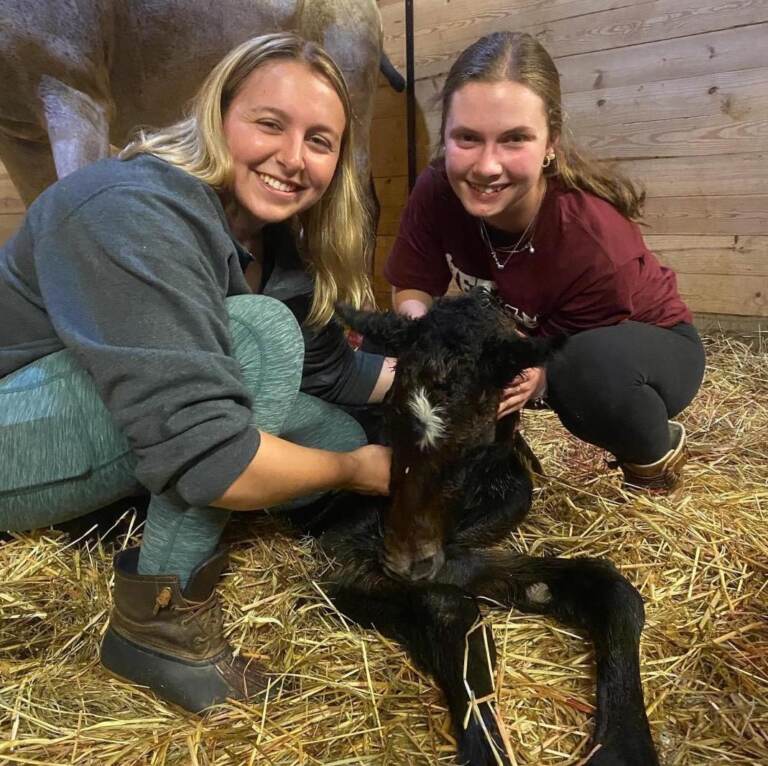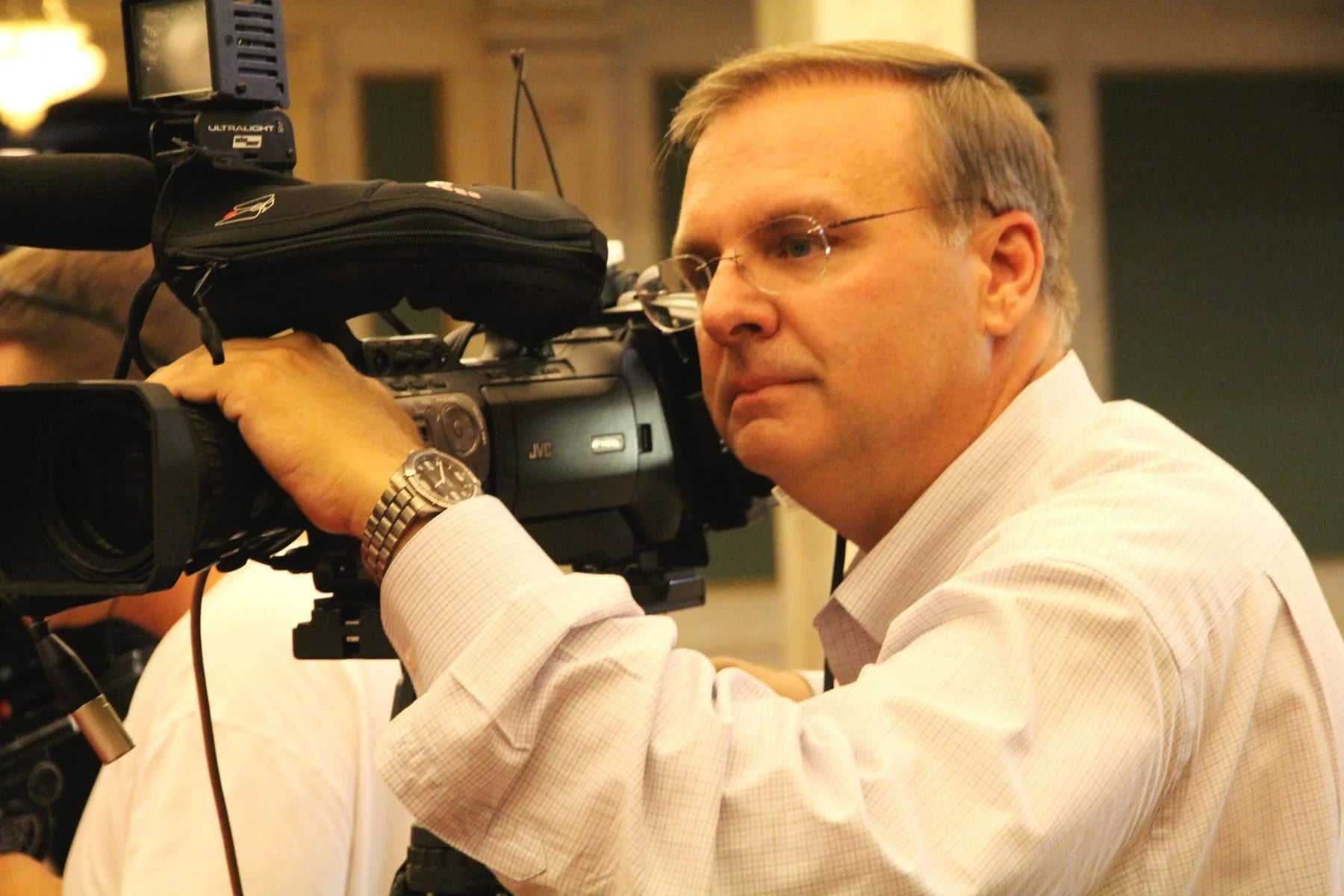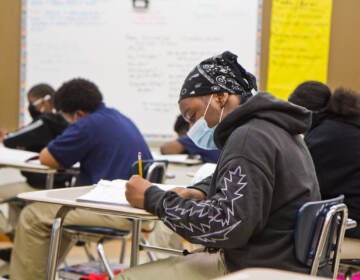‘Foal cam’ offers ‘miraculous’ look at next generation of Pennsylvania-born race horses
The Pennsylvania Horse Racing Association and Delaware Valley University in Doylestown offer a glimpse at the miracle of equine birth live.

Madison Lofgren (Equine Science '22), left, and Haley Ferguson (Small Animal Science and Equine Management, '22), right, in the Mare and Foal Management class last spring with "Eye of the Chubb" (mare) and "Salty Paprika" (filly). The theme last year was spices! (Courtesy Delaware Valley University)
For years, zoos have offered online cameras to give an inside look at the birth of wild animals. In 2017, more than a million online viewers were captivated as April the giraffe gave birth at New York’s Animal Adventure Park. At least 1.2 million people watched the event on the Animal Adventure Park’s YouTube page.
Now, some Pennsylvania horses are ready for their close-up. “Foal Cam” will offer viewers a first-hand look at the birthing process for future race horses at PennHorseRacing.com. It’s part of a partnership between the Pennsylvania Horse Racing Association and Delaware Valley University in Doylestown.
“They came and installed cameras with some of our people at Del Val.,” said Cory Kieschnick, chair of the Department of Equine Science and Management at Delaware Valley University. “They installed them in the stalls so that you get a bird’s eye view of the stall before the mare gives birth. Then the camera is on the pregnant mare and then it stays on the mare and foals together for several days afterwards.”
The cameras were initially installed as a teaching tool for Delaware Valley’s equine management students who live with the horses, or at least near them.
Kieschnick says it’s a great opportunity “having these foals at the university just a short walk down from the residence hall.”
“They’re able to not just learn about the birthing process and the different stages of labor in a book, but they’re actually able to be down in the barn when the mare gives birth, which is, yeah, it’s miraculous. It’s really fantastic,” she said.
The students help manage 30 mares and 3 stallions as part of the breeding program. The horses include both Standardbreds which are used for harness racing and Thoroughbreds, which are the saddle horse racers that you see in the Kentucky Derby and other stakes races.
The foals are raised for about a year and then sold off as racehorse prospects with the students managing their lives from birth until auction.
Not all equine births are flawless, and the students have to manage any issues that come up — that’s where the cameras come in handy to monitor the mares when they go into labor.
The school expects 13 foals to be born this year, five of which will be seen on the live cams. In February, Gouda became the first foal born on campus this year. The remaining foals born this year will also get cheese-related names.

Get daily updates from WHYY News!
WHYY is your source for fact-based, in-depth journalism and information. As a nonprofit organization, we rely on financial support from readers like you. Please give today.







